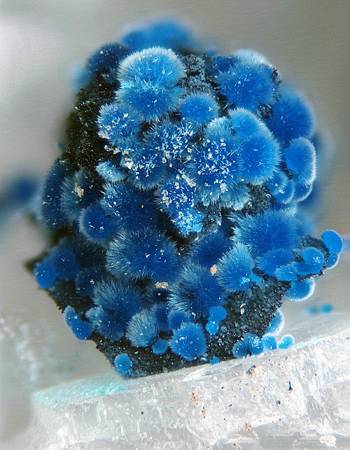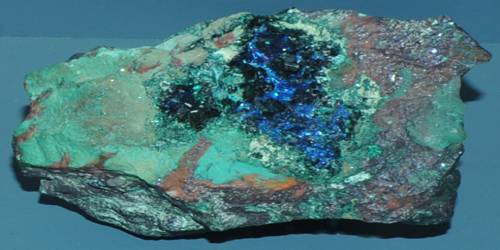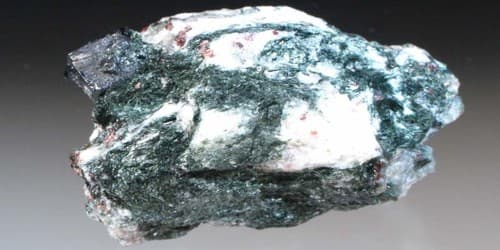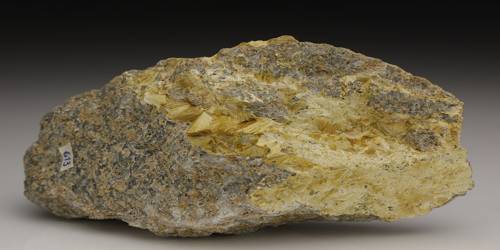Connellite is a rare mineral species, a hydrous copper chloro-sulfate, Cu19(OH)32(SO4)Cl4·3H2O, crystallizing in the hexagonal system. It is a rare hexagonal hydrous copper chlorosulfate mineral.
Connellite is named after a Scottish chemist; A. Connell. When first discovered in the 1790’s at Wheal Gorland in Cornwall, connellite was thought to be an arsenic of copper.
General Information
- Category: Halide mineral
- Formula: Cu19(OH)32(SO4)Cl43H2O
- Crystal system: Hexagonal
- Crystal class: Dihexagonal dipyramidal (6/mmm)

Properties
Connellite is a classic Cornwall mineral. It has a deep blue color and is often associated with other copper minerals yielding beautifully colored specimens with various shades of green and blue.
- Color: Azure blue, blue-green
- Crystal habit: Clusters of divergent acicular crystals, fibrous, crusts
- Fracture: Splintery
- Tenacity: Brittle
- Mohs scale hardness: 3
- Luster: Vitreous
- Streak: Pale green-blue
- Diaphaneity: Translucent
- Specific gravity: 3.36 to 3.41
Occurrence
It occurs as tufts of very delicate acicular crystals of a fine blue color and is associated with other copper minerals of secondary origin, such as cuprite and malachite. Its occurrence in Cornwall, England, was noted by Philip Rashleigh in 1802, and it was first examined chemically by Prof Arthur Connell FRSE in 1847, after whom it is named.
Connellite is an uncommon mineral that occurs as a secondary mineral in oxidized copper deposits in localities in England, Scotland, Wales, France, Italy, Greece, Austria, Germany, the United States, Australia, and New Zealand, among several other more minor localities. Minerals associated with Connellite include cuprite, spangolite, atacamite, botallackite, langite, malachite, and azurite.
Information Source:
















